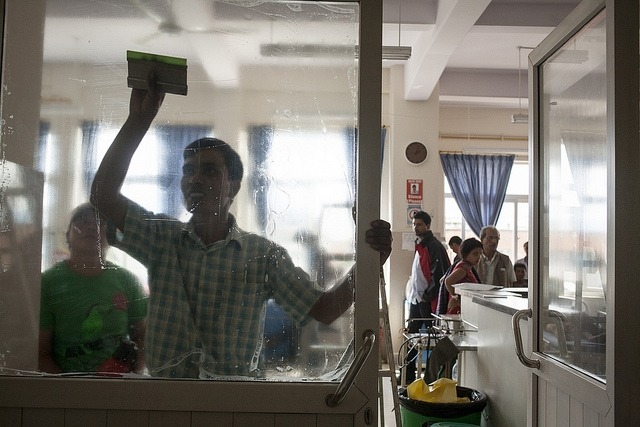

"Assess the capacity and adequacy of, as well as linkages between, critical infrastructure systems and upgrade these as necessary according to risk identified in essential 2."
Critical infrastructure includes that required for the operation of the city and that required specifically for emergency response, where different. As such, special attention must be paid to their safety and risk reduction efforts must focus on ensuring they can continue providing services when most needed. Critical infrastructure required for city operation may include but is not limited to: transport (roads, rail, airports and other ports), vehicle and heating fuel suppliers, telecommunication systems, utilities systems, hospitals and healthcare facilities, educational institutes and school facilities, food supply chain, police and fire services, etc. They also carry out essential functions during and after a disaster, where they are likely to provide recovery and relief.
- Consider possible damage to parallel infrastructure. For example, impact on evacuation capacity if one of two roads out of a city is blocked;
- Take into account linkages between different systems. For example, impact when a hospital loses its power or water supply;
- Start systematic triaged processes for prioritization of retrofit or replacement of unsafe infrastructure;
- Liaise with, and build connections between infrastructure agencies (including those that may be in the private sector) to ensure resilience is considered appropriately in project prioritization, planning, design, implementation and maintenance cycles;
- Carry out procurement processes that to include resilience criteria agreed upon by the city and stakeholders and is consistent throughout.
- Build capacity with partners to carry out risk and vulnerability assessments, environmental assessments and scientific monitoring, expanding governance capacities for ecosystem-based disaster risk management through multi-sector, multidisciplinary platforms, involving local stakeholders in decision making.
- Build partnerships with the private sector to leverage technical and financial resources and ensure that private investments follow environmental and risk reduction norms.
- For emergency management infrastructure, assess “surge” capacity – ability to deal with suddenly increased loadings from law and order issues, casualties, evacuees, and so on;
- Protect or support the protection of cultural and collecting institutions, and other sites of historical, cultural heritage and religious interest.
The Cayman Islands are one of the most frequent targets of Atlantic hurricanes, and in 2004, Hurricane Ivan, the worst storm in 86 years, struck the largest island, Grand Cayman, damaging 90% of the buildings. Power, water and communications were disrupted for months in some areas. The island began a major rebuilding process, and within the National Strategic Framework for Disaster Risk Reduction, the Health Services Authority addressed structural, non-structural, functional and workforce issues. For instance, the 124-bed Cayman Islands Hospital (the territory’s principal healthcare facility) which had been built to Category 5 hurricane standards, remained functional during and after Hurricane Ivan, while providing an impromptu shelter to more than 1,000 people. However, older facilities needed to be upgraded to new local and international building codes and protocols for healthcare facilities. Seismic risk reduction elements were also introduced into the design of new facilities.
For more information: http://www.caymanprepared.gov.ky
A growing number of countries worldwide are using the Hospital Safety Index, a low-cost tool that helps health facilities assess their safety and avoid becoming a casualty of disasters. The Hospital Safety Index provides a snapshot of the likelihood that a hospital or health facility can continue to function in emergency situations, based on structural, nonstructural and functional factors, including the environment and the health services network to which it belongs. By determining a hospital’s safety index or score, countries and decision makers will have an overall idea of its ability to respond to major emergencies and disasters. The Hospital Safety Index does not replace costly and detailed vulnerability studies. However, because it is relatively inexpensive and easy to apply, it is an important first step towards prioritizing investments in hospital safety. The Hospital Safety Index is available in English, Spanish, Arabic, Russian and French.
Download the background information and forms at http://tinyurl.com/c53gdvw
-
The Hospital Safety Index – Pan American Health Organization (2008)
A low-cost reliable tool, providing decision makers with an overall idea of a hospital’s ability to remain functioning in emergencies and disasters. Manual and forms for assessing safety. -
UNDRR Safe Hospitals Campaign: 10 Basic Facts to Know – WHO, World Bank (2008)
Ten things to keep in mind about the importance of critical facilities such as hospitals in disaster situations. -
One Million Safe Schools and Hospitals: Assessment and Mitigation Planning for Risk Reduction – UNDRR and partners
An advocacy initiative encouraging communities, organisations and individuals to make a commitment to taking action on making schools and hospitals safer (search under Information Materials for tools) -
Guidelines on Non-structural Safety in Health Facilities – Ministry of Health of Nepal (2004)
Mitigation measures that can make a difference in whether or not a hospital can continue to function in disaster situations. -
School Disaster Reduction and Readiness Checklist- Risk Reduction Education for Disasters – RiskRed (2008)
Checklist for disaster reduction in schools. -
Guidance Notes on Safer School Construction – UNDRR, INEE, World Bank
Guiding principles and general steps to develop a plan for disaster-resilient construction and retrofitting of schools. -
Safe Hospitals: A Collective Responsibility, A Global Measure of Disaster Reduction – PAHO/WHO (2005)
An advocacy brochure that makes the case for why health facilities must be disaster resilient.
